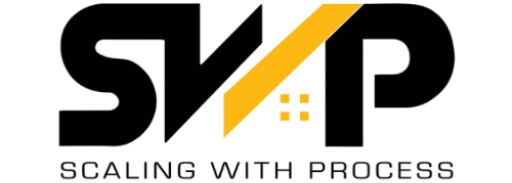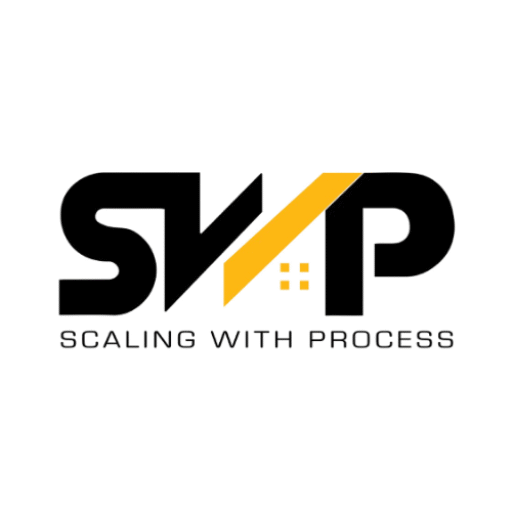When it comes to running a successful pay-per-click (PPC) campaign, budgeting isn’t just a number — it’s your strategy in action.
A PPC budget outlines how much you’re willing to spend to get clicks, impressions, or conversions from your digital ads. It dictates how your ads perform, how long they run, and how far your message can go.
PPC budgeting is a core component of any campaign, whether you’re just getting started or optimizing at scale.
Without a clear PPC budget in place (as part of your digital marketing budget) you risk overspending on underperforming ads, or worse, cutting high-potential campaigns short.
In this blog, we will cover:
- How PPC Pricing Works
- Factors that Influence Your PPC Budget
- How to Calculate Your PPC Budget
- PPC Budget Benchmarks by Industry
- Tools and Platforms to Help Set and Monitor PPC Budgets
- Optimizing and Adjusting Your Budget Over Time
- Common Budgeting Mistakes to Avoid
How PPC Pricing Works
PPC budget management starts with understanding how you pay for ads. There are three common pricing models to be aware of:
- Cost-Per-Click (CPC): You pay each time someone clicks on your ad. This is the most widely used model, especially for search-based platforms like Google Ads.
- Cost-Per-Thousand-Impressions (CPM): You pay for every 1,000 views (impressions) of your ad. CPM is common in brand awareness campaigns and display advertising.
- Cost-Per-Acquisition (CPA): You only pay when a user completes a desired action, such as a purchase or sign-up. This model is typically used in performance-driven campaigns.
Your actual cost under these models is largely influenced by ad auction systems, like those used by Google Ads and Meta. These platforms weigh factors such as your bid, ad quality, and relevance to determine whether your ad is shown and how much you pay.
This ability to optimize costs while staying competitive is a vital skill in digital advertising. In fact, understanding how ad pricing works is one of the key competencies expected of any PPC specialist.
Factors That Influence Your PPC Budget
Not all PPC campaigns are built the same and neither are their budgets. Your ideal PPC budget depends on a variety of factors, from your campaign goals to the competitiveness of your industry. Understanding these variables is key to building a budget that supports performance without burning through spend.
1. Campaign Goals: Awareness vs. Conversion
What are you trying to achieve? A brand awareness campaign on YouTube or Meta may prioritize impressions and reach, making CPM the preferred pricing model.
On the other hand, a conversion-driven campaign (e.g., sales or sign-ups) will require a more CPC or CPA-focused budget, often with higher costs but also with more measurable Return on Investment (ROI).
The clearer your goal, the more precisely you can allocate your ad spend.
2. Industry Competitiveness
Some industries, like legal services, insurance, or finance, have higher average CPCs due to intense competition for high-value keywords. Niche markets may cost less per click but could also have limited search volume.
3. Target Keywords and Location
Your keyword strategy has a direct impact on your PPC budget. High-intent, high-volume keywords tend to cost more, especially in competitive sectors.
Similarly, location targeting matters. Advertising in major cities or high-demand regions typically drives up bid prices.
4. Platforms
Each platform comes with its own pricing model, audience behavior, and learning curve.
Google Ads offers high intent but often higher CPCs. When we talk about PPC, we often associate it with Google but you may also try other paid media platforms such as Meta (Facebook/Instagram). Though it is a social media-first platform, brands have been successful using their paid media feature which is ideal for awareness and remarketing.
Another social media site where you can run PPC campaigns is TikTok known for reaching younger audiences with lower initial costs but requires creative-intensive formats. There’s also Amazon Ads which cater to users close to purchase and are highly competitive in eCommerce.
Your platform mix should reflect your audience, objectives, and content capabilities and this will shape your budget strategy accordingly.
5. Ad Quality and Landing Page Experience
One of the most overlooked budget factors is ad quality. Google and other platforms use Quality Score or Relevance Score to influence your ad cost.
The better your ad copy, targeting, and landing page experience, the less you’ll pay per click, even if your competition is bidding higher.
How to Calculate Your PPC Budget
One of the most effective ways to set a PPC budget is by working backwards from your revenue goals. Start with how much you want to earn, then calculate how much you need to spend to get there.
Here’s a simple formula to guide you:
Ad Budget = (Target Revenue ÷ Conversion Rate) × Cost Per Click (CPC)
Scenario: You Want to Increase E-commerce Sales by 10% Next Month
So, how can you calculate your PPC budget? Do you need a PPC budget calculator? Do you need to pace your budget?
Let’s explore these topics using an example:
- Your current monthly revenue: $50,000
- Target increase: 10% → $5,000 in new revenue
- Average order value (AOV): $100
- Website conversion rate: 2%
- Estimated CPC (Cost Per Click): $1.50
Step-by-Step Calculation
Determine how many new orders you need
- $5,000 target revenue ÷ $100 AOV = 50 new sales
Calculate how many clicks you need to get 50 sales
- 50 ÷ 0.02 (2% conversion rate) = 2,500 clicks
Estimate how much it will cost to get those clicks
- 2,500 × $1.50 CPC = $3,750
Result: You would need to invest approximately $3,750 in PPC next month to achieve a 10% increase in e-commerce revenue, assuming your AOV and conversion rate stay constant.
This is also where ROI becomes essential. Your pay-per-click budget should be set in a way that ensures you’re generating more revenue than you’re spending.
For sustainable growth, calculate your desired ROI and adjust your ad spend accordingly, especially if you have a clear handle on your Customer Acquisition Cost (CAC) and Customer Lifetime Value (LTV).
If your LTV is high, you can afford to invest more upfront to acquire quality leads and long-term customers.
PPC Budget Benchmarks by Industry
Understanding industry-specific benchmarks is crucial for setting realistic budgets and expectations. By knowing the PPC budget by industry, you’ll know if you’re falling behind your peers.
Average PPC campaign costs can vary significantly across industries and platforms, according to the 2025 data from Wordstream:
Tools and Platforms to Help Set and Monitor PPC Budgets
Choosing the right tools can make or break your PPC budget strategy.
From estimating CPC to forecasting spend and tracking ROI across the funnel, here are essential PPC budget management tools and platforms to help you plan and manage your ad spend effectively.
Google Ads Keyword Planner
Google Ads Keyword Planner is a free tool that helps you research keywords, forecast search volume, and estimate cost-per-click (CPC) for your chosen terms. It’s essential for building budget models and understanding how much you’ll need to bid to stay competitive.
You can filter by location, language, and search networks to get hyper-relevant insights. Practice with DMI’s free Google Ads Planner.
SEMrush & Ahrefs CPC Estimators
Both SEMrush and Ahrefs provide CPC estimators that let you analyze keyword competitiveness, potential traffic volume, and cost trends. These tools are ideal for benchmarking CPC by industry or region and refining your keyword strategy based on actual data, not guesswork.
Paid Media Budget Forecasting Tool (DMI Toolkit)
This paid media forecasting tool from the Digital Marketing Institute allows you to model various budget scenarios based on campaign goals, conversion rates, and average CPC. It’s perfect for planning spend across Google, Meta, or LinkedIn, helping marketers visualize potential outcomes before launching a campaign.
CRM Integrations (HubSpot, Salesforce)
CRMs like HubSpot and Salesforce allow for end-to-end tracking of campaign performance. By integrating your ad platforms with a CRM, you can measure cost-per-lead, sales pipeline influence, and lifetime value, giving you full-funnel visibility to optimize spend where it matters most.
How to Optimize and Adjust Your Budget Over Time
Setting a PPC budget is just the beginning. Constant optimization is what separates good campaigns from great ones. The most successful advertisers don’t just set and forget. They review, refine, and redirect based on performance and business goals.
Use tools like Google Ads’ performance dashboards and GA4 to compare performance week over week or month over month (there’s also advanced features worth looking at). Look at both micro and macro trends — are conversions dropping due to creative fatigue, or is competition increasing?
It is also imperative to do A/B testing. Test different ad headlines, CTAs, landing pages, and even platforms to see what resonates best with your target audience. It’s often the small tweaks, such as adjusting ad copy or swapping an image, that unlock dramatic improvements in conversion rates.
You can use our A/B testing toolkit to get a structured approach to designing, executing and analyzing A/B tests.
Modern platforms use AI to improve PPC campaigns. These strategies use machine learning to adjust your bids automatically based on real-time data like device, location, time of day, and audience behavior.
There are also platforms like RevealBot, Marin Software, and Optmyzr that automate budgeting at scale. These tools let you set rules to reallocate budget based on real-time performance all without manual oversight.


